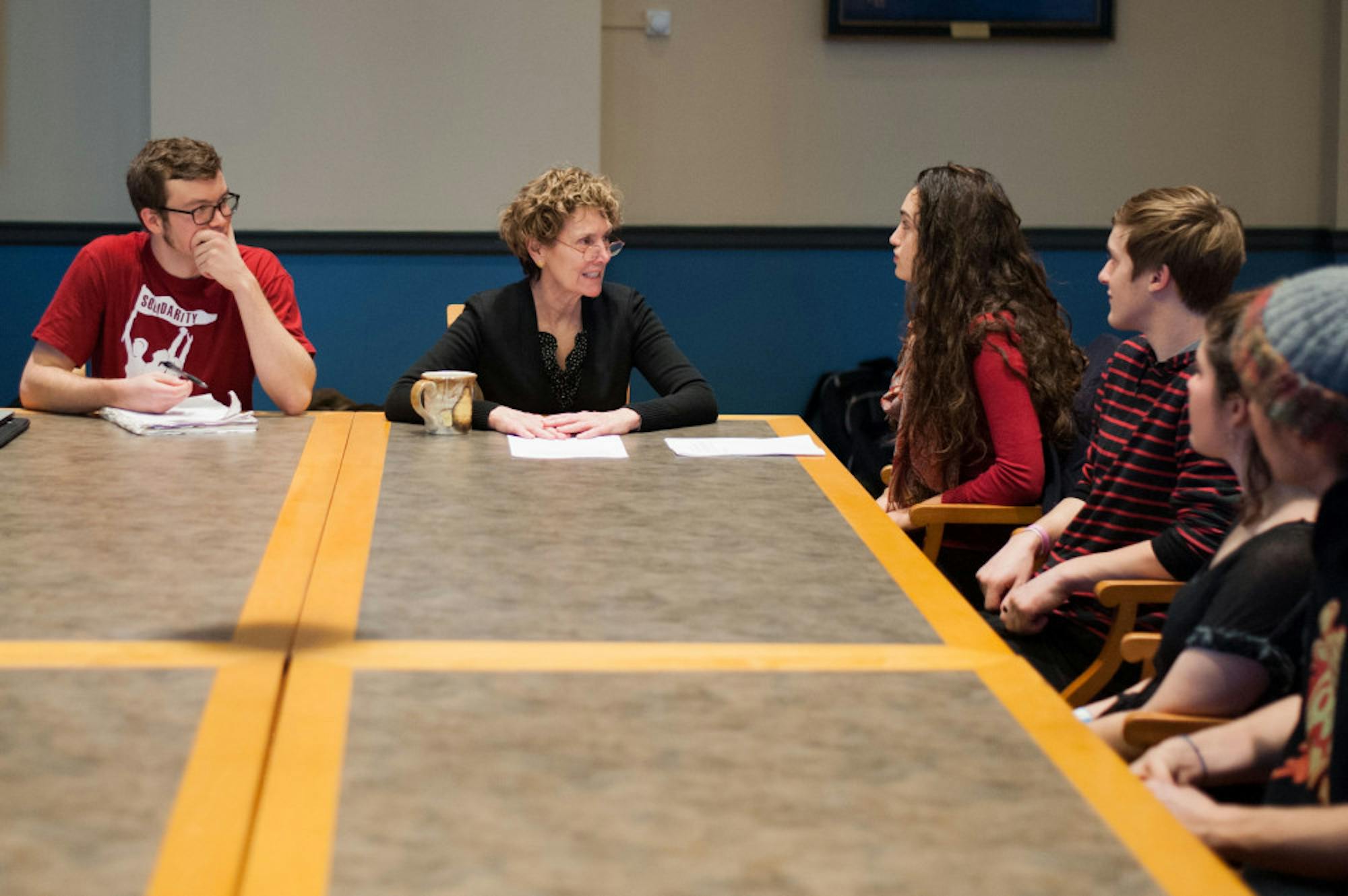"The reorganization was informed by a DTZ analysis that showed that cleaning operations here at Tufts were less efficient than those at comparable colleges and universities in the Boston area," Vice President of Operations Linda Snyder and University Executive Vice President Patricia Campbell wrote in an April 27 op-ed in the Daily.
According to Executive Director of Public Relations Kim Thurler, DTZ's analysis came after a company called Sightlines provided information to Tufts about the efficiency of its facilities. She said that Sightlines is used by more than 450 higher education institutions, and that Tufts uses the service to compare its facilities practices with those at other universities.
"Sightlines measures custodial efficiency based on the number of gross square feet (GSF) cleaned by a full-time custodian," Thurler told the Daily in an email. "[The administration] looked at the most recent data we had for past years, which showed that the average of 10 institutions in our [peer] group was 32,749 gross square feet/custodian. Tufts custodians cleaned an average of 27,501 gross square feet, or about 19% less than the average."
According to Thurler, the nine institutions other than Tufts included in the Sightlines peer group were Boston College, Northeastern University, Brown University, Carnegie Mellon University, University of Notre Dame, Northwestern University, Duke University, University of Pennsylvania and Johns Hopkins University. This analysis prompted the administration to request a plan to reallocate custodial labor from DTZ, she explained.
"[W]hen collaborating with an institution, we work diligently to develop appropriate comparative groups
based on such
parameters as size, location, mission, academic program, age profile, building characteristics, etc.," Jay Pearlman, associate vice president of Sightlines, told the Daily in an email.
As reported in the third part of this feature, the $900,000 projected to be saved annually from reorganizing the custodial staff, according to Campbell and Snyder's op-ed, is part of a $15 million in expected savings from a larger staff reorganization called Tufts Effectiveness in Administrative Management (TEAM). The TEAM website says that the initiative includes changes in purchasing strategies and the consolidation of administrative duties in positions related to finance, information technology and research administration. TEAM's implementation is slated to be completed in July 2016, according to a Nov. 23 update.
"We continue to expect approximately $15 million in annual savings while the cost to implement TEAM is expected to come under budget," Campbell wrote in the update. "While much of the annual savings will be reinvested in programmatic priorities, we expect about $4.5 million of those savings will fall to the university’s bottom line."
Campbell said that the projected $4.5 million in annual surplus revenue is important, in part, to absorb unexpected losses or expenses.
"An organization of our size should have operating results that produce a margin of at least three percent and ideally larger," Campbell told the Daily via an email from Thurler. "This margin is extremely important as it serves as a buffer when precipitous changes in finances (such as those experienced in the great recession) occur ... [It] allows Tufts to issue debt to finance new construction, to establish reserves used for capital investment and to demonstrate sound financial health to those who invest in Tufts, including our many donors."
In the previous installments of this feature, the Daily reported on the current status of custodial employment and student resistance at Tufts, the history of shifts in Tufts' custodial employment practices and the broader trend of outsourcing in higher education. For the fourth and final part of this feature, the Daily has compared Tufts' employment practices with six of the institutions identified as peers by Sightlines -- Boston College, Northeastern University, Brown University, Carnegie Mellon University and University of Notre Dame -- as well as three other Boston-area schools: Harvard University, Massachusetts Institute of Technology and Boston University. While those universities outside Tufts' Sightlines peer group differ from Tufts across several metrics -- Harvard University’s operating revenue for the 2015 fiscal year was $4.5 billion dollars, according to its 2015 financial report, for example -- the Daily has included them due to their proximity to Tufts. According to Pearlman, factors such as endowment do not necessarily influence whether schools' facilities practices are comparable.
"Endowment and tuition are often taken into account peripherally as institutions sometimes like to create peer groups of admissions peers or members of various consortia for example," Pearlman told the Daily in an email.
The Daily was unable to obtain custodial employment information for Northwestern University, University of Pennsylvania, Duke University or Johns Hopkins University, and only limited information from the University of Notre Dame's Human Resources website. Each of the contracts from which the information represented in this graphic was culled are set to expire at different times -- some will be terminated in 2016, while some extend until 2018 -- and each contract contains different timelines for wage and benefit increases. We have used two years of full-time employment as a benchmark for comparing expected base wages as an average; some contracts describe janitorial positions whose pay increases annually, while others describe positions whose pay increases for the first time after three years. All of the data used by the Daily are representative of wage and benefit information in effect as of press time.
All graphics by Shirley Wang / The Tufts Daily















